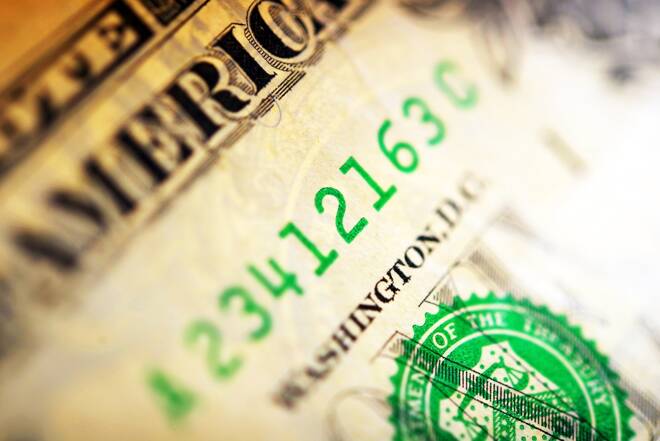Advertisement
Advertisement
The Weekly Wrap – Updates on Russia and Ukraine Gyrated the Markets
By:
The Greenback came out on top once more, with hopes of progress on talks between Russia and Ukraine waning at the end of the week.
The Stats
It was a quieter week on the economic calendar for the week ending 11th March.
A total of 50 stats were monitored, following 79 stats in the week prior.
Of the 50 stats, 24 came in ahead of forecasts, with 18 economic indicators coming up short of forecast. 8 stats were in line with forecasts in the week.
Looking at the numbers, 24 of the stats reflected an upward trend from previous figures. Of the remaining 26 stats, 25 reflected a deterioration from previous numbers.
While the stats drew interest, geopolitics remained the key driver. Russia’s continued invasion of Ukraine weighed on riskier assets, while hopes of talks eased some market angst.
Out of the U.S
Inflation and jobless claims were the key stats in the week.
In the week ending 3rd March, initial jobless claims increased from 216k to 227k. More significantly, the annual rate of inflation accelerated from 7.5% to 7.9%. The core annual rate of inflation picked up from 6.0% to 6.4%, casting yet more FED monetary policy uncertainty on the markets.
In the week ending 4th March, the Dollar Spot Index rose by 0.48% to end the week at 99.124. In the week prior, the Index jumped by 2.10% to 98.648.
Out of the UK
Industrial and manufacturing production, GDP, and trade data were in focus. The stats were mixed for the Pound.
Industrial and manufacturing production increased by 0.7% and by 0.8%, respectively, in January. The economy grew by 0.8%, reversing a 0.2% contraction from the previous month.
Trade data disappointed, however. The UK’s trade deficit widened from £12.53bn to £26.50bn, in January.
In the week, the Pound slid by 1.46% to end the week at $1.3037. In the week prior, the Pound fell by 1.33% to $1.3230.
The FTSE100 ended the week up 2.41%, partially reversing a 6.71% slide from the previous week.
Out of the Eurozone
The German economy was in focus early in the week. Impressive numbers provided little support, however, with the January numbers not capturing the impact of sanctions on the German economy.
In January, factory orders rose by 1.8%, with industrial production up 2.7%. Consumer spending was also on the rise, despite the continued rise in consumer prices. Retail sales increased by 2.7% in January.
Other stats, including Eurozone GDP and member state inflation figures, drew even less attention, with the ECB in action.
In line with market expectations, the ECB left interest rates unchanged on Thursday. The ECB did announce that it would wind down asset purchases faster than planned.
The more hawkish stance came despite ECB President Lagarde conceding that the Russian invasion of Ukraine will have a material impact on economic activity and inflation.
For the week, the EUR slipped by 0.15% to $1.0912. In the previous week, the EUR slid by 3.02% to $1.0928.
The EuroStoxx600 rose by 2.23%, with the CAC40 and the DAX ending the week up by 3.28% and by 4.07%, respectively.
For the Loonie
Trade and employment figures were upbeat in the week.
In January, Canada’s trade balance rose from C$1.58bn to C$2.62bn.
More significantly, employment surged by 336.6k in February, reversing a 200.1k slide from January. As a result, the unemployment rate fell from 6.5% to 5.5%.
In the week ending 11th March, the Loonie slipped by 0.10% to C$1.2744 against the Greenback. In the week prior, the Loonie had declined by 0.14% to C$1.2731.
Elsewhere
It was a bearish week for the Aussie Dollar and the Kiwi Dollar.
The Aussie Dollar slid by 1.04% to $0.7293, with the Kiwi Dollar falling by 0.74% to end the week at $0.6809.
For the Aussie Dollar
Business and consumer confidence delivered mixed results in the week.
In February, the NAB Business Confidence Index climbed from 4.0 to 13.0. Consumer sentiment waned, however. In March, the Westpac Consumer Sentiment Index fell by 4.2%, following on from a 1.3% decline in February.
For the Kiwi Dollar
Economic data was limited to electronic card retail sales and business PMI figures.
In February, electronic card retail sales slid by 7.8%, reversing a 3.0% increase from January. The Business PMI rose from 52.3 to 53.6 but was not enough to reverse losses for the Kiwi Dollar, which saw deep red on Friday.
For the Japanese Yen
GDP and household spending numbers were in focus, with the stats negative in the week.
In the 4th quarter, the Japanese economy grew by 1.1%, which was down from a prelim 1.4%. Year on year, the economy expanded by 4.6%, which was down from a prelim 5.6%.
Household spending also failed to impress. In January, spending fell by 1.2%, reversing a 0.2% increase from December.
The Japanese Yen tumbled by 2.15% to end the week at ¥117.290 against the Dollar. In the week prior, the Yen ended the week up by 0.63% to ¥114.820.
Out of China
Trade and inflation data from China also had a limited impact on the global financial markets, despite upbeat numbers.
China’s USD trade surplus widened from $94.46bn to $115.95bn in February. The annual rate of inflation held steady at 0.9%, which was also market positive.
In the week ending 11th March, the Chinese Yuan fell by 0.31 to CNY6.3393. Through the week prior, the Yuan had ended the week up by 0.03% to CNY6.3195.
The Hang Seng Index and the CSI300 ended the week down by 6.17% and by 4.22%, respectively.
About the Author
Bob Masonauthor
With over 28 years of experience in the financial industry, Bob has worked with various global rating agencies and multinational banks. Currently he is covering currencies, commodities, alternative asset classes and global equities, focusing mostly on European and Asian markets.
Advertisement
